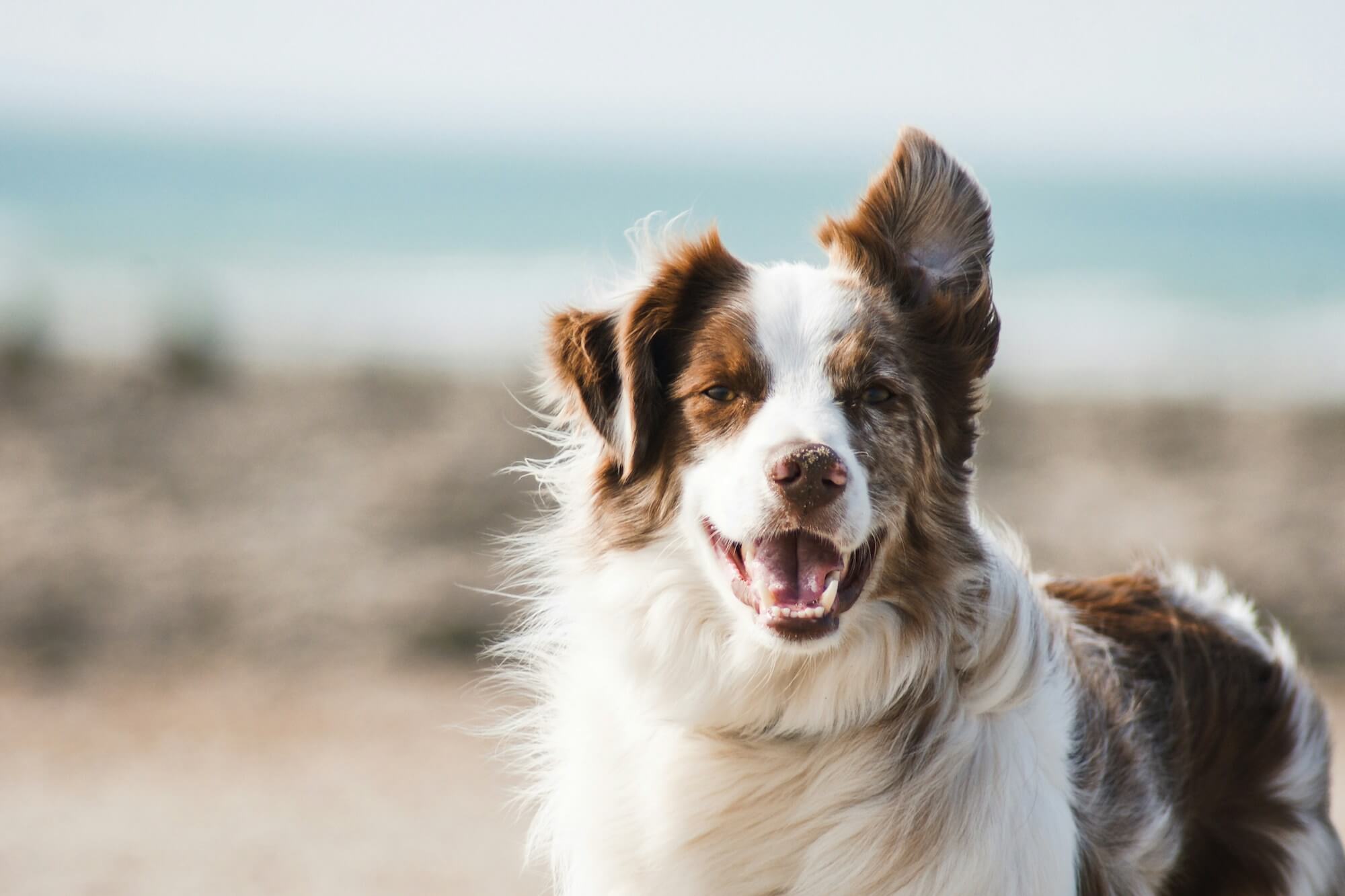Am I my dog’s favourite person?
As a pet parent, you’ve probably wondered this, because we all want to be the one your dog loves most. Well, it’s all about socialisation, attention, positive association, and personality.
Sometimes, a dog’s favourite person is not always their primary caregiver, sometimes it might even be your dog’s next-door neighbour.
So How Do Dogs Choose Their Favourite Person?
Is it the person they lick the most? The person whose lap they sit on.
The human that supplies the most Farmer Pete’s treats. Or is it something else?
And is it possible to change their minds?
Many dogs bond hardest to whoever cares for them during their key socialisation period, which occurs between birth and six months. At this age, puppies’ brains are incredibly receptive, and their early social experiences influence them for the rest of their lives.
That’s why it’s so important to ensure your puppy has positive interactions with a wide range of people, places, and things.
Of course, every dog is different, but some generalisations apply.

13 Top Reasons On How Dogs Choose Their Favourite Person
Read on below learn all about the 13 top reasons why dogs choose their favourite person.
1. Primary caregiver
Dogs are social animals that form attachment bonds with those who provide for their basic needs. The individual who consistently feeds them, takes them for walks, provides grooming, and offers affection tends to become central in the dog's life. Dogs rely on these caregivers for their physical and emotional well-being, strengthening the bond between them.
2. Positive associations
Dogs are adept at recognising patterns and associating people with positive experiences. If a person consistently offers the best Farmer Pete’s Beef Liver treats, praise, and engaging activities, the dog will naturally gravitate towards them. Over time, these positive interactions reinforce the bond and contribute to the dog's preference for that individual.
3. Body language and tone
Dogs are highly attuned to human communication cues, including body language and vocal tone. They can sense when a person is calm, relaxed, and attentive, which promotes feelings of security and trust. Conversely, if someone displays erratic or threatening behaviour, the dog may feel anxious or fearful. Dogs often seek out individuals who communicate in a clear, gentle, and reassuring manner.
4. Consistency
Dogs thrive on routine and predictability. They feel most secure when their environment is stable, and their needs are consistently met. A person who adheres to a regular schedule for feeding, walking, and playtime establishes a sense of security for the dog. Consistency fosters trust and strengthens the bond between the dog and their preferred person.
5. Socialisation
Early socialisation plays a crucial role in shaping a dog's behaviour and relationships with humans. Dogs that are exposed to a variety of people during their formative stages tend to be more comfortable and outgoing around different individuals.
However, even well-socialised dogs may show a preference for certain people based on the quality of interactions and the level of trust they feel. For example, dogs who aren’t exposed to people wearing hats may become afraid of hats later in life.
If your dog was already an adult when you adopted them, don’t worry it’s not too late to become their favourite. While early experiences are important continued socialisation through experiences play dates, daily walks, doggy day-care and dog parks matter a lot!
6. Respect and trust
Dogs thrive in environments where they feel respected, valued, and understood. Positive reinforcement training methods, which focus on rewarding desired behaviours rather than punishing unwanted ones, build trust and strengthen the bond between dogs and their owners. Dogs are more likely to form a strong attachment to individuals who treat them with kindness, patience, and empathy.
7. Emotional connection
Dogs can experience a wide range of emotions, including love, loyalty, and affection. They often form deep emotional bonds with their human companions, viewing them as members of their pack. Factors such as shared experiences, mutual understanding, and companionship contribute to the development of these strong emotional connections.
Dogs may show a preference for individuals who provide comfort, companionship, and a sense of security.
8. Physical comfort
Dogs are drawn to individuals who make them feel physically comfortable and safe. This includes factors such as providing cosy sleeping spaces, gentle grooming, and soothing touch. Dogs often seek out the company of those who offer warmth, affectionate cuddles, and reassuring physical contact.
9. Play and stimulation
Dogs enjoy playful interactions and mental stimulation. Individuals who engage in stimulating activities, such as interactive games, puzzle toys, or training sessions, can capture a dog's interest and affection. Playtime strengthens the bond between dogs and their favourite people by fostering positive experiences and creating joyful memories.
10. Empathy and understanding
Dogs are highly perceptive creatures that can sense and respond to human emotions. They often seek out individuals who demonstrate empathy, understanding, and emotional support.
Dogs may show a preference for people who are attuned to their needs, offer comfort during times of distress, and provide reassurance through gentle affection and companionship.
11. Shared experiences
Dogs form strong bonds with individuals through shared experiences and adventures. Whether it's exploring the great outdoors, going on hikes, or simply enjoying leisurely strolls together, these shared activities create lasting memories and deepen the bond between dogs and their favourite people.
Dogs may develop a strong attachment to those who accompany them on exciting adventures and enriching experiences.
12. Respect for boundaries
Dogs appreciate individuals who respect their boundaries and communicate in a non-threatening manner. It's important to recognise and respect a dog's signals for comfort or discomfort, such as body language cues indicating stress or fear. By respecting a dog's boundaries and allowing them to approach interactions at their own pace, individuals can build trust and strengthen the bond with their canine companions.
13. Unconditional love
Dogs offer unwavering loyalty, affection, and devotion to their favourite people. They form deep emotional connections based on trust, respect, and unconditional love. Dogs may show a preference for individuals who reciprocate these feelings and provide a nurturing, supportive environment where they feel valued and cherished.

Bad Associations Spoil Useful Habits
This is a phrase that underscores the importance of positive reinforcement and consistent training in dogs. When associating a dog, it's crucial to create a positive and encouraging environment to reinforce desired behaviours.
Dogs often react poorly to people with whom they have bad associations (your dog will usually not make a lasting friendship with the vet) Positive associations lead to positive dog-human relationships
If a dog associates a particular action or environment with something negative, it can develop fear or aggression. For instance, if a dog is punished harshly for not coming when called, it might start avoiding coming to its owner altogether. If a dog is given an injection every visit to the vet, it will associate that experience with pain.
Rewarding good behaviour with treats, praise, or playtime helps reinforce those behaviours. Negative experiences or punishments can create fear and anxiety, leading to bad associations.

How to become your dog’s favourite person
If you think, you’re not your dog’s favourite person, and you want to be, don’t panic. You can improve and increase the bond between you by just spending 30 minutes a day of active and focused one-on-one time together. Activities like:
- Playing fetch, chasing a ball or frisbee
- Having a training session, using your dog's favourite Farmer Pete’s treats.
- Grooming (only if they enjoy it) or massage.
- Take your dog to the dog park
Conclusion: Reasons Your Dog Chose You as Their Favorite Person
By considering these factors, we can better understand how dogs choose their favourite person and how to foster strong, healthy bonds with our canine companions. By fostering trust, respect, and positive experiences, people can become cherished members of their dog's pack and enjoy a lifelong bond filled with love, companionship, and joy.
Bonding occurs naturally between dogs and the people who treat them well. Take good care of your dog, socialise him, give him positive experiences, and respect his unique personality. He’ll reward you with a lifetime of love.



